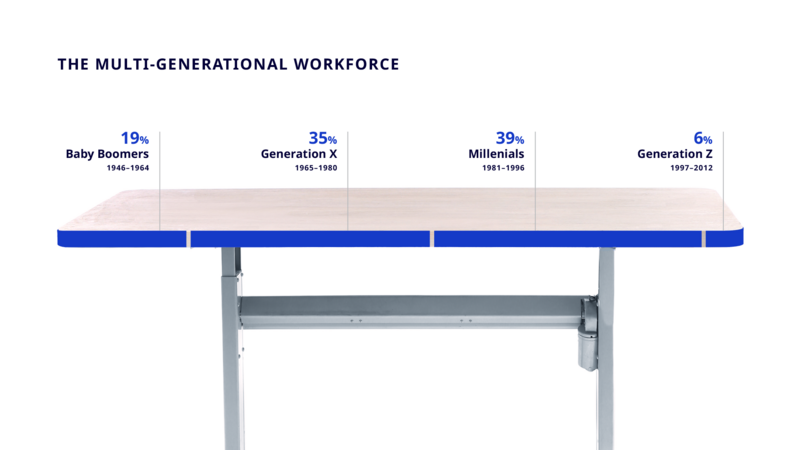Engineering a suitable setting for a cross-generational workforce requires an integrated approach based around three critical environments—company culture, the physical workspace, and technology—to create an optimal experience that enhances each employee’s time spent onsite.
Company Culture
Company culture is becoming increasingly important for employees, especially younger generations. For that reason, it’s imperative that employees feel a company’s values through strategic initiatives, interactions, and experiences that spark innovation and evoke a sense of belonging.
One aspect of activating company culture comes from Workplace Experience Managers. These dedicated professionals create high-level engagement opportunities through value-added activities and curated events for the well-being and enjoyment of all employees, clients, and visitors.
Physical Workspace
Strategic office layouts are vital for meeting employees’ needs for choice, comfort, and wellness. If done right, the workplace offers opportunities for collaboration, casual collisions, and focus, creating a stress-free environment that meets the needs of cross-generational preferences.
Vibrant work environments with the right space configuration support creativity, innovation, and engagement to energize teams and boost productivity.
Technology
Effective use of workplace technology is the thread that ties everything together, keeping employees connected, productive, and informed. It enables flexible and remote work options, supports a seamless onsite experience, and heightens employee satisfaction.
Technology plays an important role for all four generations, but especially for Millennials and Zoomers, who may become disengaged without access to smart tech.
Leveraging the Workplace
Our post-pandemic, cross-generational workforce has its own set of ideas and expectations around work. By uncovering and delivering on preferences and leveraging the workplace as a strategic tool to drive engagement, productivity, and well-being, companies can future proof for talent acquisition and retention while also boosting employee pride in the process.

